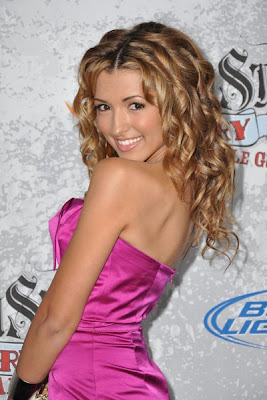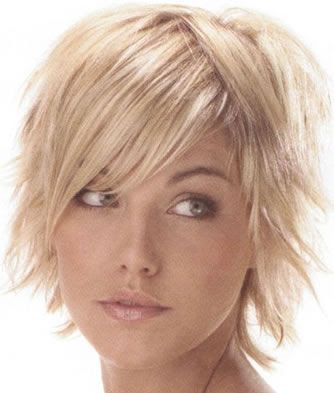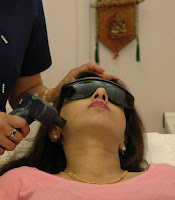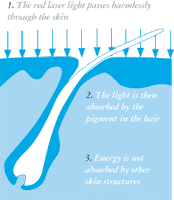If you have thought a curl is just a curl and there’s nothing beyond that…well! You are absolutely wrong! There’s more to curls which is why perming is so much in demand even today. Take a peek to know all about the different types of perms that can be achieved through various processes to make a style statement.
Different Types of PermsPerms are cool and totally haute but these are not the latest idea in hair fashion! Soft bouncy perms or tight perms - different types of perms help to add different shades to one’s personality. When straight hair seem boring to you, perms are a great way to change your looks!
Permanent waves, also known as perms, involve the use of a process where hair is treated with chemicals to alter the structure of the hair. This process allows a person with poker straight hair to have luscious, bouncy curls! Technically, this process can also be called as curl reformation.
The desire to curl the tresses was noticed even in the ancient days. Women tied their wet hair with paper in an attempt to curl the same. The ancient Egyptians had another method to perm their hair. They wrapped their hair around wooden sticks. They then added a layer of mud over this so that it gets baked in the sun, which eventually results in curly locks.
The process used today involves the use of two main components. The first part is where hair is wrapped around rods. The second part involves the use of the chemical treatments. Well, if you think this was the only thing about perming, then you must be aware there is loads to curls then you can ever think about! There are different types of perm hairstyles you can choose from to suit your personality and hair texture. Therefore, before you opt for the perming process, you would need to be aware of these various types to select one you truly desire.
The perming styles differ in terms of the rods used, the section of hair that is wrapped around the rod as well as the kind of solution that is applied. This gives us different types of perms. There are some perms that are possible without the use of chemicals as well! Definitely there’s more to flirty curls than you can ever imagine! Take a look at some of the different types of perms that are creating waves everywhere!
Different types of Perms:Body Wave Perms: These are loose perms that are stylized with a slight wave. These are ideal for women who want to opt for the curly haired look with more volume. This style of a loose perm will also add more movement to your hair.

Straight hair when treated with the perming process for the body wave perm would result in large curls. Naturally wavy hair would look even curlier. This process is generally done with the help of large rods.
Multi-textured Perms: The multi-textured perm is used when a person wants a natural effect for the hair. For this process, small and large rods are used to create natural looking curls.
 Pin Curl Perms:
Pin Curl Perms: Pin curl perms are obtained by curling sections of the hair with the help of pins. This can be achieved without the use of chemical treatment with the help of some gel and curling pins! It would give a natural look. Besides, you don’t really have to worry about any chemical reaction.
 Root Perms:
Root Perms: This type adds the lift to the roots of the hair. Therefore, root perms are ideal for flat and short hair.
 Stack Perms:
Stack Perms: Stack perms are more suitable for women who have single hair length. These can be obtained even with the help of rollers or perm rods of different sizes. Here, the illusion of layers can be created with this process. It thus adds more volume to the hair.

 Spiral Perms:
Spiral Perms: The look of the spiral perm would depend upon the width of the perming rod, chemicals used as well as the expertise of the hairstylist! This technique is achieved with the help of long perm rods. The end result is a bunch of cascading curls that have spring and bounce. Spiral perms are tight and can spring out in various directions.
 Spot Perms:
Spot Perms: A spot perm also uses the permanent technique to curl only one section of the hair. Here, one can have tight or loose curls, which would depend upon the width of the rod. Spot perms are used by women who want to add style to a particular section of the hair. This perm can also be used to add a curl to the ends for example, for stylish updos.
Weave Perms: A weave perm is useful when one wishes to add perms to few sections of the hair but keeping some of the strands straight in texture. This creates a different texture to certain areas of the straight hair.
 Gentle Wavy Perms:
Gentle Wavy Perms: These types of perms are used to create a wavy look adding more form and structure to the hair. These perms are also useful to add more body to the hair and comprise of large and loose perms.
Partial Spiral Perms: This technique involves the use of adding curls to the lower strands of the hair. This would leave the upper portion of the hair straight in texture. This technique is particularly suitable for medium length to long hair. Partial spiral perms are great for those who only wish to curl the edges.
Volumizing Perms: This technique of permanent waves is suitable for different types of hair lengths. Volumizing perms add more volume and texture to dull and lifeless hair. Hair in turns looks more bouncy and glamorous.

During the process, the curls are allowed
to relax to avoid the tight curl look. The perm in this case is only used to add more volume but avoiding the springy, tight curly look. It thus lays less emphasis on the curl.
There are different methods used to create various types of perms. The acid perm is used for hair that is sensitive and this process minimizes the risk for hair damage. Firm looking curls are possible with the process of alkaline perms. This is advisable for people with normal hair who are looking out for firm curls. Where as, the exothermic perm process is used to create bouncy curls with the application of gentle heat.
You must always choose the best hair salon to perm your hair. Discuss with your hairstylist about the possibilities with reference to your hair texture and the kind of look that is desired. So are you ready to make waves amongst your friends? Girls, go all out and have fun with some cascading curls for this season!







